[ad_1]
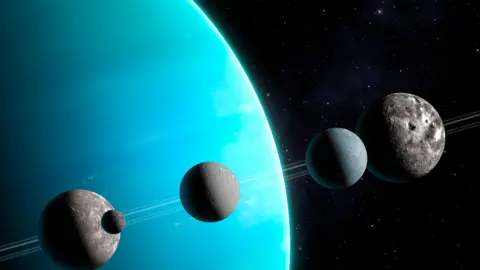 SPL
SPLThe planet Uranus and its 5 largest moons is probably not the useless sterile worlds that scientists have lengthy thought.
As an alternative, they might have oceans, and the moons could even be able to supporting life, scientists say.
A lot of what we learn about them was gathered by Nasa’s Voyager 2 spacecraft which visited practically 40 years in the past.
However a brand new evaluation reveals that Voyager’s go to coincided with a strong photo voltaic storm, which led to a deceptive concept of what the Uranian system is admittedly like.
Uranus is a wonderful, icy ringed world within the outer reaches of our photo voltaic system. It’s among the many coldest of all of the planets. It is usually tilted on its facet in comparison with all the opposite worlds – as if it had been knocked over – making it arguably the weirdest.
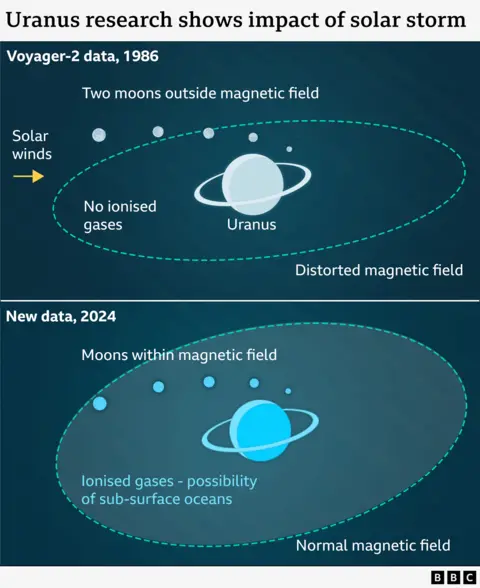
We received our first close-up take a look at it in 1986, when Voyager 2 flew previous and despatched again sensational footage of the planet and its 5 main moons.
However what amazed scientists much more was the info Voyager 2 despatched again indicating that the Uranian system was even weirder than they thought.
The measurements from the spacecraft’s devices indicated that the planets and moons had been inactive, not like the opposite moons within the outer photo voltaic system. In addition they confirmed that Uranus’s protecting magnetic area was surprisingly distorted. It was squashed and pushed away from the Solar.
A planet’s magnetic area traps any gases and different materials coming off the planet and its moons. These could be from oceans or geological exercise. Voyager 2 discovered none, suggesting that Uranus and its 5 largest moons had been sterile and inactive.
This got here as an unlimited shock as a result of it was not like the photo voltaic system’s different planets and their moons.
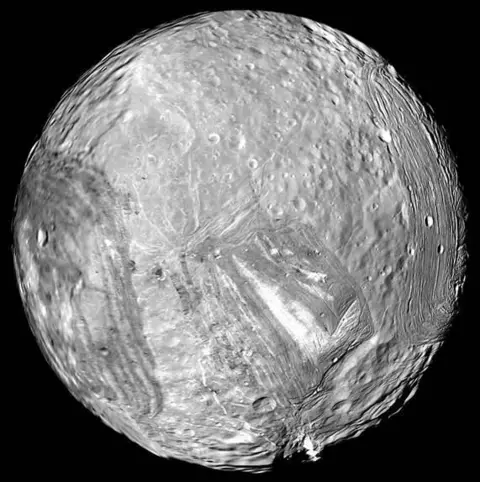 NASA
NASA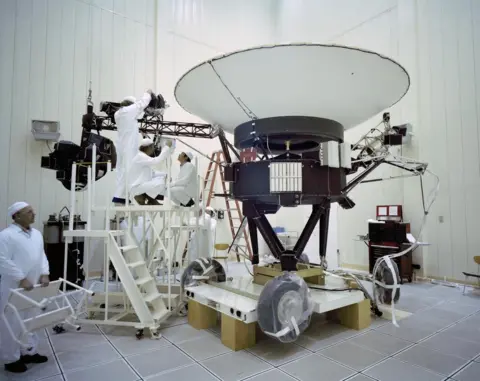 NASA
NASAHowever the brand new evaluation has solved the decades-long thriller. It reveals that Voyager 2 flew previous on a nasty day.
The brand new analysis reveals that simply as Voyager 2 flew previous Uranus, the Solar was raging, creating a strong photo voltaic wind that may have blown the fabric away and briefly distorted the magnetic area.
So, for 40 years we’ve had an incorrect view of what Uranus and its 5 largest moons are usually like, in accordance with Dr William Dunn of College Faculty London.
“These outcomes counsel that the Uranian system may very well be rather more thrilling than beforehand thought. There may very well be moons there that might have the situations which can be vital for all times, they could have oceans beneath the floor that may very well be teeming with fish!”.
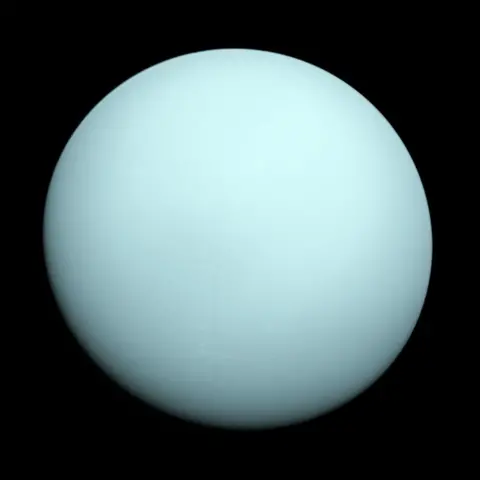 NASA
NASALinda Spilker was a younger scientist engaged on the Voyager programme when the Uranus knowledge got here in. She is now nonetheless serving because the undertaking scientist for the Voyager missions. She stated that she was delighted to listen to concerning the new outcomes, which have been published in the Journal Nature Astronomy.
“The outcomes are fascinating, and I’m actually excited to see that there’s potential for all times within the Uranian system,” she advised PJ Information.
“I’m additionally so happy that a lot is being completed with the Voyager knowledge. It’s wonderful that scientists are trying again on the knowledge we collected in 1986 and discovering new outcomes and new discoveries”.
Dr Affelia Wibisono of the Dublin Institute for Superior Research, who’s unbiased of the analysis workforce, described the outcomes as “very thrilling”.
“It reveals how necessary it’s to look again at outdated knowledge, as a result of generally, hiding behind them is one thing new to be found, which may help us design the subsequent era of area exploration missions”.
Which is strictly what Nasa is doing, partly on account of the brand new analysis.
It has been practically 40 years since Voyager 2 final flew previous the icy world and its moons. Nasa has plans to launch a brand new mission, the Uranus Orbiter and Probe, to return for a more in-depth look in 10 years’ time.
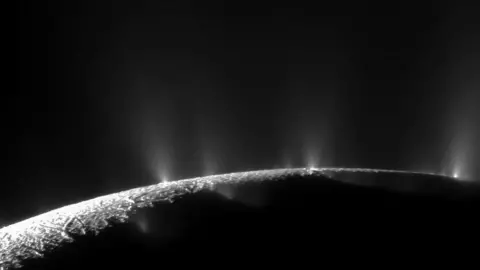 NASA
NASAIn line with Nasa’s Dr Jamie Jasinski, whose concept it was to re-examine the Voyager 2 knowledge, the mission might want to take his outcomes into consideration when designing its devices and planning the scientific survey.
“A few of the devices for the longer term spacecraft are very a lot being designed with concepts from what we realized from Voyager 2 when it flew previous the system when it was experiencing an irregular occasion. So we have to rethink how precisely we’re going to design the devices on the brand new mission in order that we are able to greatest seize the science we have to make discoveries”.
Nasa’s Uranus probe is anticipated to reach by 2045, which is when scientists hope to search out out whether or not these far-flung icy moons, as soon as regarded as being useless worlds, might need the potential for being residence to life.
[ad_2]
[ad_1]
#analysis #prompts #rethink #probabilities #life #Uranus #moons
[ad_2]
, 2024-11-11 16:00:00




